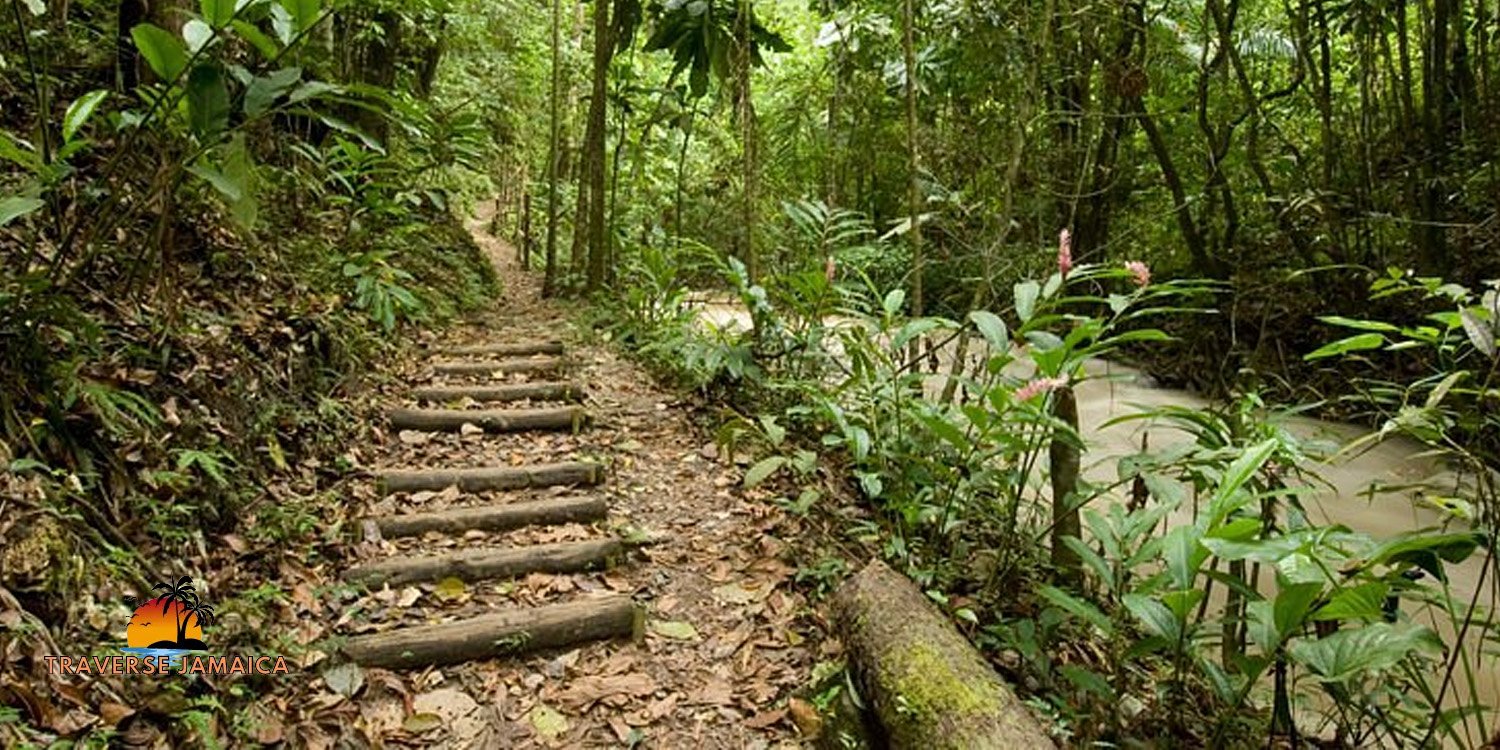In the verdant heart of St. Ann Parish on the northern coast of Jamaica lies Cranbrook Flower Forest, a sprawling estate rich in history and natural beauty. This scenic property, known for its expansive gardens, serene river trails, and picturesque landscapes, offers visitors a tranquil retreat in the Jamaican countryside. With a combination of vibrant flora, clear rivers, and historical significance, Cranbrook Flower Forest is an ideal destination for nature lovers, families, and anyone seeking a serene connection with nature.
The Historical Roots of Cranbrook Flower Forest
The Cranbrook estate, like many properties in Jamaica, has deep historical roots stretching back to the island’s colonial period. The estate was originally part of a sugar plantation, typical of the region during the 17th and 18th centuries when Jamaica’s economy was heavily reliant on sugar production. The surrounding St. Ann Parish was particularly known for its agricultural output, which included sugarcane, pimento, and livestock farming.
Over time, however, the estate underwent a transformation, moving away from large-scale sugar farming and becoming a place dedicated to the cultivation of ornamental plants and fruit trees. The name “Cranbrook” is a testament to the estate’s close relationship with its natural surroundings. “Cran” refers to the Cranbrook River, which flows through the property, while “brook” highlights the small streams and water features that have shaped the landscape.
The decision to convert the former plantation into a flower forest was not only an aesthetic one but also a reflection of Jamaica’s evolving agricultural economy. As global demand for sugar waned, the estate’s owners saw an opportunity to shift toward ecotourism and horticulture, capitalizing on the region’s natural beauty. Today, the estate serves as a floral paradise, attracting tourists and locals alike who come to enjoy its gardens, river trails, and historical significance.
The Birth of a Flower Forest
Cranbrook Flower Forest as we know it today took shape in the late 20th century when the estate was intentionally designed as a botanical and recreational destination. The concept of a “flower forest” perfectly captures the essence of the estate, as its carefully curated gardens feature an impressive variety of flora, many of which are native to Jamaica.
The gardens were developed to celebrate Jamaica’s rich biodiversity while also providing a space where visitors could engage with nature in a peaceful and meaningful way. As visitors explore the property, they are transported through various ecosystems, from dense tropical forests to open lawns dotted with colorful flowers.
Cranbrook also plays an important role in conservation and education. The estate’s efforts to cultivate and protect indigenous plants and trees have contributed to preserving Jamaica’s botanical heritage, while its grounds provide an outdoor classroom for visitors to learn about the island’s ecosystems and the importance of environmental sustainability.
The Lush Gardens of Cranbrook Flower Forest
One of the most stunning features of Cranbrook Flower Forest is its vast and meticulously maintained gardens. Spanning several acres, these gardens boast an extraordinary variety of ornamental plants, flowering shrubs, and towering trees. The estate’s layout has been designed to immerse visitors in an explosion of colors, textures, and fragrances that change with the seasons.
The gardens are home to:
- Tropical flowers such as hibiscus, orchids, and bougainvillea, which thrive in Jamaica’s warm climate
- Exotic plants from around the world, adding diversity and interest to the landscape
- Fruit trees, including citrus, pimento (allspice), and other native species
- A variety of ferns and palms that provide a lush, tropical canopy
The orchid collection is one of the highlights of the garden, with numerous species and hybrids flourishing in the flower forest. Orchids have a special place in Jamaican horticulture, and Cranbrook’s dedication to growing and showcasing them has made it a must-see for orchid enthusiasts.
Visitors to the gardens will also appreciate the carefully designed walking paths that wind through the estate, allowing for a leisurely exploration of the property’s natural beauty. Benches and shaded gazebos are strategically placed throughout the gardens, offering spots for quiet reflection or simply to take in the surrounding splendor.
River Trails and Waterfalls: A Natural Adventure
In addition to its gardens, Cranbrook Flower Forest is renowned for its river trails and natural water features. The Cranbrook River, which meanders through the property, is a refreshing highlight for visitors, especially on hot days. The river’s crystal-clear waters invite guests to wade in, take a dip, or simply sit by its banks and enjoy the peaceful surroundings.
Several well-maintained hiking trails run alongside the river, offering visitors the chance to explore the estate’s natural beauty on foot. One of the most popular trails leads to a hidden waterfall, where visitors can cool off in the natural pool below or bask in the serenity of the cascading water. This waterfall hike is ideal for families or those looking for a gentle adventure, with the reward of stunning views and refreshing waters at the end.
For those who prefer a more relaxed experience, the estate offers picnic areas along the riverbank. These spots are perfect for spending a leisurely afternoon surrounded by nature, with the gentle sound of the river creating a calming atmosphere.
Ecotourism and Sustainability at Cranbrook Flower Forest
Cranbrook Flower Forest is a shining example of how historical estates can be transformed into modern ecotourism destinations that prioritize sustainability and environmental stewardship. The estate’s focus on horticulture and conservation not only benefits the environment but also provides educational opportunities for visitors.
By showcasing Jamaica’s rich plant life and biodiversity, Cranbrook encourages a deeper understanding of the island’s natural resources and the need to protect them. The estate also promotes sustainable tourism practices, ensuring that future generations can continue to enjoy its beauty.
Additionally, Cranbrook Flower Forest supports local communities by offering employment opportunities and sourcing plants and materials from nearby suppliers. This commitment to sustainability extends to the estate’s maintenance practices, which prioritize organic gardening methods and the responsible use of water resources.
Visiting Cranbrook Flower Forest: What to Expect
A visit to Cranbrook Flower Forest offers a wide range of activities for all ages, from peaceful garden strolls to adventurous river hikes. Here’s what you can expect during your visit:
- Opening Hours: Cranbrook is typically open to the public every day of the week, making it easy for visitors to plan their trip. Guided tours are available for those interested in learning more about the estate’s history and botanical treasures.
- Admission Fees: There is an entrance fee, which helps support the maintenance of the gardens and trails. Discounts are often available for children, seniors, and group bookings.
- Picnic Areas: Guests are encouraged to bring a picnic and enjoy a meal by the river or in one of the many garden spaces. The peaceful atmosphere makes Cranbrook an ideal location for family outings or romantic getaways.
- Gift Shop: The on-site gift shop offers a range of locally made products, including plants, souvenirs, and artisan crafts, providing a great opportunity to support Jamaican artisans.
Conclusion
Cranbrook Flower Forest in St. Ann stands as a testament to Jamaica’s rich agricultural and botanical history. From its origins as a sugar plantation to its current status as a beloved ecotourism destination, the estate offers a unique blend of natural beauty, history, and outdoor adventure. Whether you’re wandering through its lush gardens, hiking along river trails, or simply relaxing by the water, Cranbrook provides a peaceful escape into nature, inviting all who visit to experience the magic of Jamaica’s flora and fauna.









